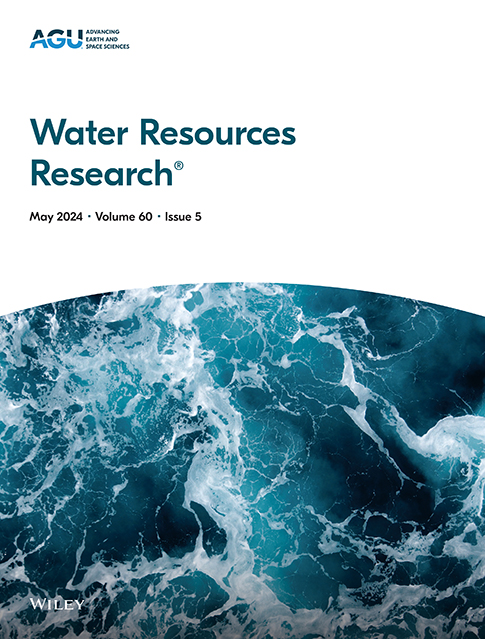How Alluvial Storage Controls Spatiotemporal Water Balance Partitioning in Intermittent and Ephemeral Stream Systems
IF 4.6
1区 地球科学
Q2 ENVIRONMENTAL SCIENCES
引用次数: 0
Abstract
The hydrological dynamics of intermittent rivers and ephemeral streams (IRES) impacts the availability of water to riparian ecosystems, the height of downstream runoff peaks, and the replenishment of groundwater systems. Despite its significance, the influence of superficial geology on IRES flow processes remains an area of limited understanding. Here we first present a comprehensive data set encompassing streamflow and groundwater levels from an intermittent stream situated in New South Wales, Australia. We then use targeted geophysical investigations to show how the configurations of superficial geology control the streamflow and groundwater responses. The analysis reveals that periods of stable stream stage consistently occur after episodic surges in streamflow, followed by recession and channel desiccation. The duration of the stable phases exhibits an upstream-to-downstream pattern, reaching a maximum of 44 ± 3 days upstream and then abruptly declining further downstream. There is remarkable consistency in the duration of these stable flow periods, irrespective of the size of preceding streamflow peaks. We propose two primary controls of this behavior: (a) variability in permeability contrasts between channel alluvium and surrounding geological deposits, and (b) longitudinal fluctuations in the volume of the recent channel alluvial reservoir. The interplay of these controls generates a “goldilocks zone,” which optimizes riparian water availability and the potential for groundwater recharge in IRES landscapes. These geological controls may reflect a continuum present in other dryland catchments with widespread implications for groundwater recharge and stream classification based on flow occurrence and duration.间歇性河流和短时溪流(IRES)的水文动态影响着河岸生态系统的水供应、下游径流峰值的高度以及地下水系统的补给。尽管表层地质对 IRES 流过程的影响非常重要,但人们对这一领域的了解仍然有限。在这里,我们首先介绍了澳大利亚新南威尔士州一条间歇性溪流的综合数据集,其中包括溪流流量和地下水位。然后,我们利用有针对性的地球物理调查来说明表层地质构造是如何控制溪流和地下水响应的。分析结果表明,在溪流出现偶发性暴涨之后,会持续出现稳定的溪流阶段,随后是溪流衰退和河道干涸。稳定阶段的持续时间呈现出从上游到下游的模式,上游最长为 44 ± 3 天,然后在下游突然缩短。这些稳定流期的持续时间具有明显的一致性,与之前的溪流峰值大小无关。我们认为这种行为有两个主要的控制因素:(a)河道冲积层与周围地质沉积之间渗透性对比的变化;(b)近期河道冲积水库容积的纵向波动。这些控制因素的相互作用产生了一个 "金锁区",优化了河岸的水供应和 IRES 地形的地下水补给潜力。这些地质控制可能反映了其他旱地集水区的连续性,对地下水补给和基于流量发生和持续时间的溪流分类具有广泛影响。
本文章由计算机程序翻译,如有差异,请以英文原文为准。
求助全文
约1分钟内获得全文
求助全文
来源期刊

Water Resources Research
环境科学-湖沼学
CiteScore
8.80
自引率
13.00%
发文量
599
审稿时长
3.5 months
期刊介绍:
Water Resources Research (WRR) is an interdisciplinary journal that focuses on hydrology and water resources. It publishes original research in the natural and social sciences of water. It emphasizes the role of water in the Earth system, including physical, chemical, biological, and ecological processes in water resources research and management, including social, policy, and public health implications. It encompasses observational, experimental, theoretical, analytical, numerical, and data-driven approaches that advance the science of water and its management. Submissions are evaluated for their novelty, accuracy, significance, and broader implications of the findings.
 求助内容:
求助内容: 应助结果提醒方式:
应助结果提醒方式:


